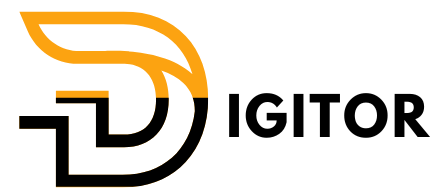Building Powerful Websites with Python’s Django and Flask Frameworks
Introduction: Python Frameworks Leading Web Development
Python has established itself as one of the most versatile programming languages, and its frameworks—Django and Flask—are pivotal in the web development domain. Whether you’re building a complex enterprise application or a minimalistic web solution, these frameworks provide the tools and flexibility needed to craft powerful websites.
This guide delves into how Python web frameworks (Django, Flask) streamline development and elevate the capabilities of web applications.
Django: The Framework for Robust and Scalable Websites
Django is a high-level Python framework known for its “batteries-included” approach. It’s designed to let developers focus on writing apps rather than reinventing the wheel, making it an excellent choice for building complex, scalable websites.
Features That Make Django Stand Out
- Comprehensive Built-in Tools: Django comes with an ORM (Object-Relational Mapping), authentication system, and admin interface, enabling rapid development.
- Security First: Protects against common threats like SQL injection and cross-site scripting (XSS).
- Scalability: Powers high-traffic websites like Instagram and Pinterest.
Use Case: E-commerce and Large-scale Platforms
For developers, Django’s ORM simplifies database management, and its scalability makes it ideal for building e-commerce sites, multi-user applications, and data-driven platforms.
from django.http import HttpResponse
def index(request):
return HttpResponse("Welcome to our powerful Django-powered website!")
Django’s modular structure allows developers to break applications into smaller, manageable components, making it perfect for scaling projects as business needs grow.

Flask: The Lightweight Framework for Flexible Development
Flask is a micro-framework known for its simplicity and minimalism. Unlike Django, Flask does not come with built-in components like ORM or admin tools, making it a highly customizable choice for developers who need complete control over their projects.
Features That Define Flask
- Minimalism: Offers flexibility to build applications with only the components needed.
- Extensibility: Supports extensions for adding functionalities like form handling and authentication.
- Quick Prototyping: Ideal for startups and projects with rapid iteration cycles.
Use Case: Prototypes and APIs
Flask’s lightweight nature makes it a preferred choice for creating RESTful APIs and minimalistic websites.
from flask import Flask
app = Flask(__name__)
@app.route("/")
def home():
return "Welcome to a custom Flask-built website!"
if __name__ == "__main__":
app.run(debug=True)
Flask provides developers the freedom to choose libraries, extensions, and tools, making it highly adaptable for unique project requirements.
Django vs. Flask: Choosing the Right Framework
| Feature | Django | Flask |
|---|---|---|
| Complexity | Suitable for large projects | Best for small to medium projects |
| Flexibility | Opinionated, includes built-in tools | Minimalistic, highly customizable |
| Learning Curve | Steeper due to built-in features | Easier for beginners |
| Performance | May require tuning for large apps | Lightweight, faster for smaller apps |
The choice between Django and Flask depends on project size, complexity, and specific requirements.
Key Benefits of Using Python Web Frameworks
1. Rapid Development
Both frameworks are designed to reduce development time. Django’s prebuilt tools allow developers to implement features quickly, while Flask’s minimalistic approach accelerates prototyping and testing.
2. Community and Resources
Python web frameworks boast large, active communities. Whether troubleshooting issues or exploring extensions, developers can find abundant resources.
3. Scalability
With Django’s robust architecture and Flask’s lightweight flexibility, developers can scale applications based on business needs.
Optimizing Websites with Python Frameworks
To ensure your website performs optimally:
- Use Django for heavy traffic and complex applications where built-in tools reduce development time.
- Leverage Flask for lightweight applications or when building RESTful APIs for integration with other services.
- Integrate tools like Celery for background task handling and caching mechanisms like Redis for performance optimization.
Real-World Applications of Django and Flask
- Django: E-commerce platforms, content management systems (CMS), social networking apps.
- Flask: Prototypes, microservices, IoT applications, and API development.
Conclusion: The Power of Django and Flask for Web Development
Whether you choose Django for its comprehensive features or Flask for its simplicity, both frameworks excel at building dynamic and robust websites. For developers, understanding the nuances of Python web frameworks (Django, Flask) opens doors to creating tailored solutions that meet modern business demands.
Looking to harness the power of Python for your next web project? Contact us to collaborate with experts who specialize in Django and Flask development.
External Resources
Django Documentation
Flask Documentation
Explore more related articles to deepen your understanding and make informed choices about graphic design techniques
WordPress Website Developer: Expert Solutions for Your Online Presence
Custom WordPress Development: Tailored Websites for Your Business







